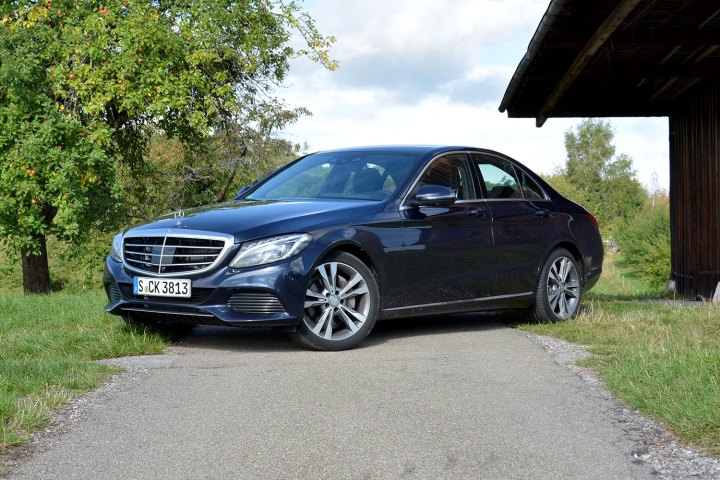
The C300d 4Matic was canceled for reasons of product strategy, a company spokesman told Digital Trends. Had it launched as planned, Mercedes’ first diesel compact sedan since the 190D (w201) would have offered a 2.1-liter four-cylinder turbodiesel engine rated at 201 horsepower and a generous 369 pound-feet of torque, and permanent all-wheel drive.
The C300d has been on sale in Europe — where it is rear-wheel drive and known as the C250d (pictured) — for over a year. It proved its performance credentials by completing the 12.4-mile long Pikes Peak Hill Climb in 11 minutes and 22 seconds, an all-time record for a car equipped with a turbodiesel engine.
Last year, the Environmental Protection Agency (EPA) instituted an array of new compliance tests designed to prevent automakers who sell diesels from gaming the system. No evidence of wrong-doing has been uncovered since, but Mercedes hinted it changed its mind about selling a diesel-powered C in the United States because getting it certified by the EPA has turned into an overly time-consuming process.
“Numerous authorities are currently testing diesel engine vehicles for compliance with emission standards. Of course, this process has a considerable impact on new diesel certification projects both in terms of effort and duration,” explained the spokesman.
The GLC powered by the C300d’s 2.1-liter might also get canned in the wake of the new regulations, and Automotive News reports that the diesel-powered version of the GLE is currently in limbo. The only model in the clear is the GLS350d, though Mercedes can’t sell it until the V6 engine is approved by the EPA and it hasn’t announced a firm launch date yet. The story is different on the other side of the pond, where nearly every member of the Mercedes lineup is available with at least one turbodiesel engine.
Other automakers have felt the shock waves, too. Currently, Jaguar is the only brand allowed by the EPA to sell 2017-model year passenger cars powered by a diesel engine. The oil-burning variants of BMW’s 3 Series, X3, and X5 are expected to get the agency’s approval in the coming months, and Chevrolet’s Cruze diesel isn’t far behind.



